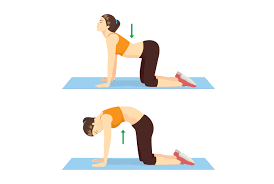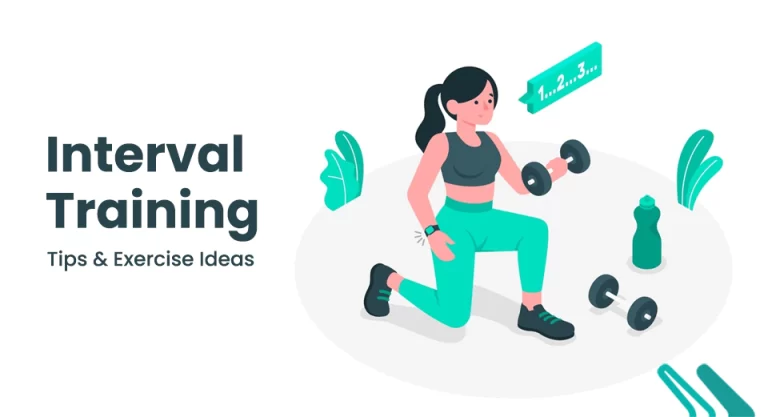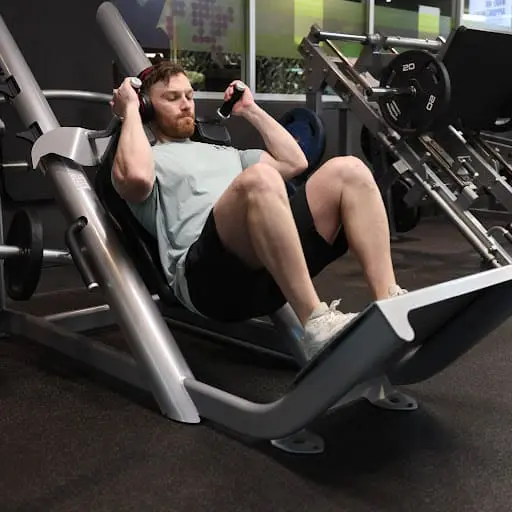How Many Hours Per Week Should We Exercise?
Introduction:
Exercise is anything that gets your body in motion. Every week adults need 150 minutes of moderate-intensity physical activity and two days of muscle-strengthening exercise, according to the current research.
here we explain some techniques to manipulate the hours:
Figure out how many hours of exercise you may need
– Meet and exceed recommended minimum and maximum exercise to unlock health benefits and reach health benefits goals
– It is important to find the perfect balance between different types of training
– How you can know you are doing too much exercise.
One of the common questions, people ask when they start a new training or workout regimen is how many hours they should do exercising in a week. It could be terrific if there were just one cut-and-dry answer that worked for everybody, but the reality is that the time you spend exercising will depend on your unique capacity and fitness goals. Whether you look for simple and get the minimum recommended amount of exercise to maintain an active and healthy lifestyle or you are trying to decrease weight, gain muscle power or train for athletic performance, this guide will help you figure out how many hours you should be exercising per week, and how to balance your exercise hours between different types of exercise training for good health and fitness results.
There has different training you should follow according to hours in a week.
- Aerobic Exercise (Cardio)
An important place to begin when considering the hours you should be exercising per week is with the recommended minimum amounts of exercise for achieving optimal health. These hours provide an important baseline and foundation upon which you may build to meet and exceed your training and exercise goals.

According to research adults need to do at least 180-300 minutes of moderate-intensity aerobic exercise per week. These moderate-intensity aerobic exercises can take the form of many recognizable exercises that can already be part of your daily activities.
Some moderate-intensity aerobic exercises add brisk walking, swimming, casual cycling, playing sports, and gardening.
If 180-300 minutes is more then you can substitute vigorous forms of aerobic exercise like running, jumping rope, climbing stairs or hills with a weighted backpack, robust cycling, singles tennis, or aerobic dance. If you only do vigorous forms of aerobic exercise like these, the recommended minimum number of hours is cut in half 1.30-2.8 hours (80-150 minutes).
a great degree of flexibility in your personalized training and exercise protocol.
Moderate and vigorous exercises can be performed combined to get your minimum goal. For guidance, if you are running for 25 minutes, 3 times a week, you will easily get 75 minutes of vigorous aerobic activity. However, if you wish to run only two times a week, you can substitute a single 50-minute session or two 25-minute sessions of moderate-intensity exercises, such as casual cycling or gardening.
In reality, the options for achieving the recommended minimum hours are limitless, and the HHS guidelines acknowledge that exceeding five hours of moderate-intensity exercise or 2.5 hours of vigorous-intensity exercise brings optimal health benefits.
- Strength Training
Maintain the right balance between different types of training. In addition to a cardio workout, many guidelines recommend that adults must do muscle-strengthening exercises at least two days per week. beginners should perform strength training for 25-35 minutes, 2-3 times a week. More experienced individuals can increase this to 30-45 minutes of strength training, 3-4 times a week. To improve muscle growth add protein synthesis, and add L-Glutamine to your diet.

For the bodybuilder or professional athlete, these amounts may not seem like more, but research shows that significant increases in strength and muscle mass are possible at these levels of exercise, particularly for newcomers.
This is a myth that you need to spend more hours in the gym every week to achieve good muscle mass.If you are concerned and you have to follow the science-based research for strength training, then the minimum hours per week you need to spend on these exercises come in at around 1.5 to 2 hours (80-90 minutes) for beginners or 2-3 hours (100-180 minutes) for more advanced individuals.
if you are training professionally or for any competition, your main goals may require a heavier workout time, but you can still make significant reaching with these recommended workout timings.
Optimizing your hours spent exercising
To recap the above recommendations, persons should aim for at least 3-5 hours of moderate/vigorous-intensity aerobic exercise in a week and at least 1.8-3 hours of a strength training exercise in one week.
Preferably these hours should be spread throughout your week. Doing some exercise every day, whether aerobic or strength training, is the best option for your health. When you tally it all up the total amount of exercise you need per week falls between 6-8 hours or around 50-70 minutes per day.
Something important to keep in mind when thinking about these figures is that they do not need to be achieved in the gym, and if you do spend time in the gym for a strength training workout, that time can also count towards your aerobic exercise totals. Variations of strength training can improve your Heart pumping as well as blood pumping during your workout time.
If you recently doing a strength training and weightlifting workout regime, then you are easily achieving the muscle-strengthen component of the recommendations, but you may be lost in the aerobic component. If you do not like vigorous cardio, like running on the treadmill, there have other options to help you optimize your cardio exercise hours and support your overall health and fitness.
Low-intensity exercises such as core or abdominal training, stretching, yoga, and pilates can help you to bring balance to your exercise regime and your body. Doing the same exercise for a long time like weightlifting included can lead to imbalance or injury. Time spent on these lighter-intensity aerobic and strength exercises is still included in your total amount of exercise and each contributes its specific benefits to your overall health and well-being.
How do you know if you are exercising too much?
even though there has no accepted maximum for how much exercise you should get, it is possible to get too much exercise, and your body will rapidly begin to let you know if you are overworking it.
Here we explain a few signs and symptoms that can realize you are exercising too much or at an intensity that does not match your current fitness level:
- Not capable to lift/exercising at the same weight/intensity as during your regular workouts
- Feeling lethargic or tired and needing prolonged rest
- Continue feeling sore muscles or heavy limbs
- Developing injuries from overuse of muscles and joints
- Loss of interest and feeling anxious or depressed
- Often getting sick or coming down with colds
- Unintentionally losing weight
If you are exercising more and suffer from any of these symptoms, it is advisable to rest completely or get back from your current level of activity. If Serious symptoms and injuries predict then you should always consult with your doctor.
For a healthy person, the Department of Health and Human Services issues these exercise guidelines:
Aerobic activity:
Do at least 120 minutes of moderate aerobic activity or 70 minutes of vigorous aerobic activity in one week or a combination of moderate and vigorous activity. The research suggests that you spread out this exercise over a week. To provide optimal health benefits and to assist with weight loss or maintaining weight, at least 280 minutes a week is recommended. But even short-term exercise is also helpful. Being active for short periods in a whole day can add up to provide health improvement.
Strength training:
Perform strength training exercises for all major muscle groups at least 2 times a week. The goal is to do a single set of every exercise using a weight or resistance level heavy enough to exhaust your muscles after about 15 to 20 repetitions. Strength training can add the use of weights like a barbell, dumbbells, and machines, your body weight, heavy bags, resistance tubing or resistance paddles in the water, or activities such as rock climbing.
Moderate aerobic exercise:
Moderate aerobic exercise adds some brisk walking, swimming, biking, and mowing the lawn.
Vigorous aerobic exercise:
Vigorous aerobic exercise adds activities like running, heavy yard work, and aerobic dancing.
As a general goal is at least thirty minutes of moderate physical activity in a day. If you want to decrease weight, maintain weight loss, or meet specific physical goals, you may exercise a lot. Decreasing sitting time is very important, too. The more hours you sit in a day, the increased your risk of metabolic problems. Sitting for a long time can negatively impact your health, even if you are you are doing a good amount of daily physical activity. Some guideline has found that people who have lost weight may be more likely to keep off the lost weight by sitting less during the day.
Short on long chunks of time?
Even small bouts of activity offer benefits. For instance, if you can not fit in one time thirty-minute walk during the day, try a few five-minute walks instead. some physical activity is fine then nothing at all. What is most important is making regular exercise a part of your lifestyle.
We know 180 minutes of exercise each week sounds like a lot, but you do not have to do it all at one time. It could be thirty minutes a day, five days a week. You can spread your activity out during the week and break it up into smaller chunks of time.
See the below tips for getting started.
Adults should follow the steps of this exercise as specified in the following options.
- Moderate-intensity aerobic activity: Walking(such as brisk walking) for 180 minutes every week (for example,30 to 40 minutes a day, five days per week) and Muscle-strengthening activities: Weight Lifting on two or more days a week that work all major muscle groups (legs, hips, back, abdomen, chest, shoulders, and arms).
- Vigorous-intensity aerobic activity: Running and jogging for 80 minutes every week. It does not mean running in one day. you can run for 15 to 20 minutes a day Muscle-strengthening activities: Weight Lifting on two or more days a week that utilize all major muscle groups ( shoulders, legs, hips, back, abdomen, chest, and arms).
- An equal mix of moderate and vigorous-intensity aerobic exercise: A combination of walking and running on 2 or more days a week and Muscle-strengthening activities Weight Lifting on two or more days a week that utilize all major muscle groups (upper limb, chest, and back, and lower limb).
For Even Greater Health Benefits
- If you go beyond 150 minutes a week of moderate-intensity activity, 75 minutes a week of vigorous-intensity activity, or an equivalent combination, you’ll gain even more health benefits to tackle daily work.
FAQ
Every week adults need 150 to 180 minutes of moderate-intensity physical activity and two days of muscle-strengthening exercise, according to the current Physical Activity Guidelines for Americans. We know 140 minutes of physical activity each week sounds like more, but you do not have to perform it all at once.
Generally, our goal is to do either thirty minutes of moderate-intensity cardio activity at least 5 days a week (180 minutes per week) or at least 30 minutes of vigorous aerobic activity 3 days per week (80 minutes per week)
A typical workout for a typical aim will usually take between 40-100 minutes to complete, most frequently between 50-90 minutes workout.
In general aim for at least thirty minutes of moderate physical activity in one day. If you want to decrease weight, maintain weight loss, or meet specific fitness goals, you may need to exercise a lot. Decreasing sitting time is more important, too.
The seven-Day Workout Schedule:
Monday: Cardio or aerobic training.
Tuesday: Lower limb strengthening exercise.
Wednesday: Upper limb and core muscles strengthening exercise.
Thursday: Do some rest and recovery period for working muscles.
Friday: Lower limb with a focus on glutes.
Saturday: Upper limb muscles strengthening exercise or running.
Sunday: Do some Rest and recovery period for muscles.
Regular exercise can increase your muscle strength and boost your endurance. Physical activities deliver oxygen and nutrients to your tissues and help your cardiovascular system work more efficiently. And when your lung and heart health improve, you have more energy to tackle daily work.






